How to Increase Humidity in Ball Python Tank? – A COMPLETE Guide
As an Amazon Associate, I may earn from qualifying purchases at no extra cost to you.

Ball pythons are one of the most popular pet reptiles thanks to their colorful and imaginative skin patterns, with colors that can range from yellow and white to brown and black to better blend in with the environment.
However, ball or royal pythons originate from around African shrubs and grasslands, where can they grow up to 6 feet (180 centimetres) long, and have specific environmental requirements to thrive.
Hence, a newfangled ball python owner might wonder — what amount of moisture is correct for my snake and how do I increase the humidity in a ball python tank?
Read on and find out!
More...
Natural ball python habitat
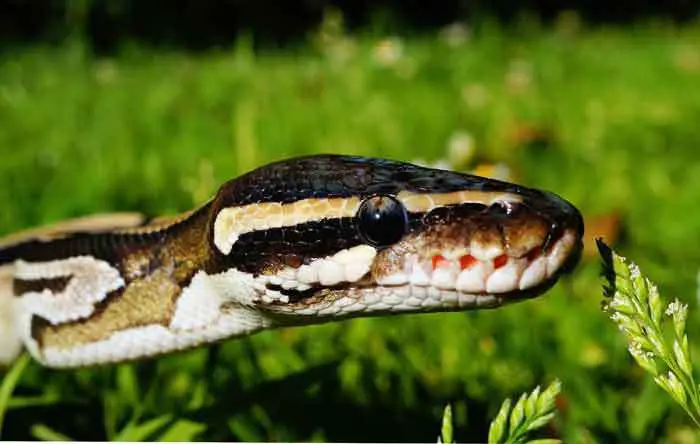
Like all reptiles, ball pythons rely on their environment to provide them with warmth and sunlight.
This means they should be provided with artificial sunlight in captivity.
A fluorescent UVB light bulb running for 12 hours a day can simulate the natural day/night cycle.
Through the light bulb, the python gets vitamin D3 that helps it regulate its metabolism.
In the wild, a ball python will seek temperatures between 20-30 °C (68-86 °F) and have the tendency to burrow underground when looking to cool off.
When it’s time to bask, pythons will tolerate up to 35-40 °C (95-105 °F).
The python will naturally want to move and explore around its habitat, so as it grows, it should be afforded a bigger tank.
Alternatively, a larger tank can be bought right away and filled up with different hiding places so the python doesn’t feel exposed.
Understanding what the ball python needs and why, will help the owner create the best habitat for it.
Creating the best artificial habitat for a ball python

Monitoring and constantly upregulating the humidity is a must-do task for ball python owners.
Each ball python will have its own natural rhythm of activities; It might want to curl up in the back of the tank and then stretch out, so needs to have a habitat for each purpose.
In our homes, ball python's are usually housed in ball python tanks that tend to have a mesh topside for air circulation.
However, this also lets moisture escape which can cause complications for a ball python if the humidity fluctuates too often.
Ball python tanks typically come in either of two types: glass or plastic.
Glass tanks are prone to breaking but come in a wider variety of sizes, while plastic tanks provide for a more consistent temperature and humidity but are harder to customize.
Ideal temperature for a ball python
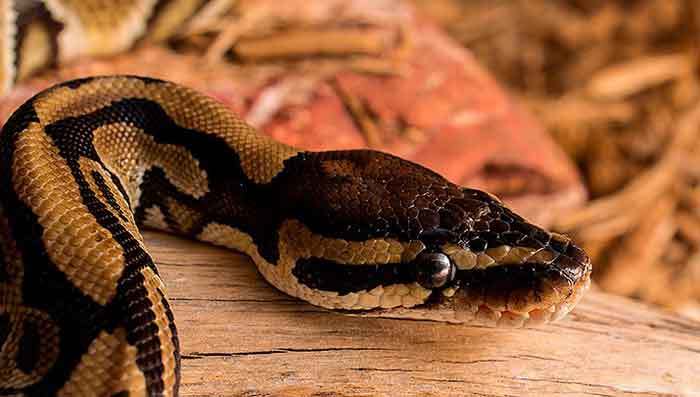
The ideal temperature for a ball python tank is between 88 to 96 degrees Fahrenheit (31 to 36 degrees Celsius).
This can be achieved by heating some parts of the tank to closely mimic how the snake’s natural habitat feels.
By doing so, the snake can gravitate towards the part of the tank where it feels appropriate temperature.
A word of caution, if the temperature drops too low, the ball python may stop eating.
Ideal humidity for a ball python

The ideal humidity for a ball python is around 60% and is typically maintained with a tank humidifier or mister.
A common item used by owners to increase the temperature is a heat lamp.
While useful in this aspect, it can actually sap too much moisture from the environment.
If the humidity is too low, a ball python may have difficulty shedding or develop respiratory problems!
How to Increase Humidity in Ball Python Tank?
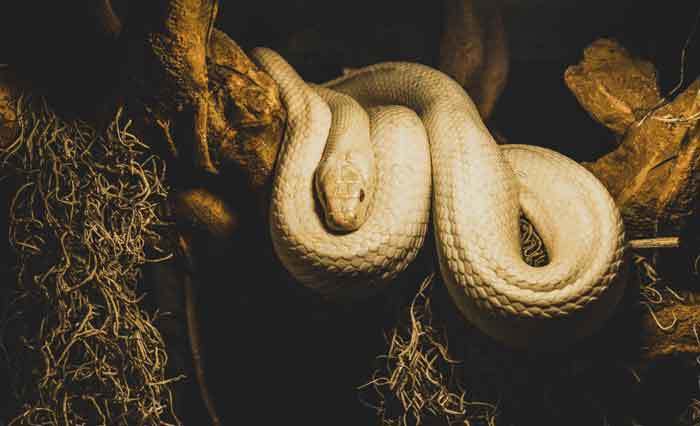
1) Use a humidifier
Humidifiers work to deliver much needed moisture to the enclosure in optimal and often adjustable amounts.
Related: Best Humidifier for Ball Pythons.
2) Type of Bedding
In addition to a humidifier, a ball python's tank bedding plays a role in retaining humidity as well.
If the bedding is too dry, the snake could scrape its belly slithering on it, hence a moisturized bedding would allow the snake to explore its tank without hurting itself.
All bedding materials have different moisture retaining properties. Drier ones require higher humidity in the tank.
Some of the most common bedding choices for ball pythons are:
Orchid bark, coconut substrate, and cypress mulch (or a combination) are the best choices for ball python bedding.

Alternatively, aspen is affordable, absorbs odors, and lets the python burrow, but soaks up moisture and then rots quickly.
Newspapers are also an option and are the cheapest and the easiest to replace, with some owners recommending unprinted newspapers.
Sand is a good option, but can get messy while towels and carpets discourage the burrowing behavior.
Paper towels are the most newbie-friendly bedding material. However, they are not suitable for young snakes and small tanks.
Ultimately, while sufficiently moist, your ball python's bedding should not be wet, as it can lead to scale rot, an infection of the snake’s belly.
The skin first turns red then swells before it starts rotting.
Furthermore, wet bedding can also invite mold to the tank.
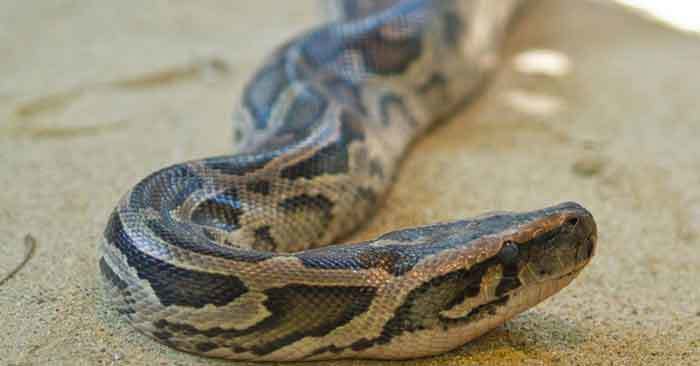
Note: Meals should be offered to the ball python either using tongs or on a plastic lid to minimize the swallowing of bedding.
3) A water dish
A water dish is also an effective way for the ball python to get moisture. It is typically placed inside python tank where the snake has easy access to. However, do ensuring that it is heavy enough so it can’t be tipped over too easily.
4) Others
Other ways to maintain humidity in a ball python tank are by placing:
What is a moisture box?
The moisture box is a plain plastic box with a hole large enough for the ball python to enter.
After making sure there are no sharp edges, the box is filled with damp bedding.
The ball python then has an added hiding spot that mimics the natural moist soil it enjoys burrowing in.
Is too much humidity bad for ball pythons?

Ball python owners report no bad effects of too much humidity.
If you are worried because moisture has started condensing inside the tank, some air circulation, such as with a fan, should do the trick.
70-80% humidity is tolerable for a ball python, with some owners reporting their ball pythons soaking it all in with no ill effects.
The best course of action is to observe the ball python across a range of humidity and find what pleases it the most.
Furthermore, the primary, holding and feeding habitats should be connected.
In this way, the python can stay active while choosing the most comfortable environment at that point of time.
If the snake is shedding with ease, the humidity is just right.
If the python spends too much time in the water bowl, it might be signaling the tank is too dry.
Conclusion: How to Increase Humidity in Ball Python Tank?
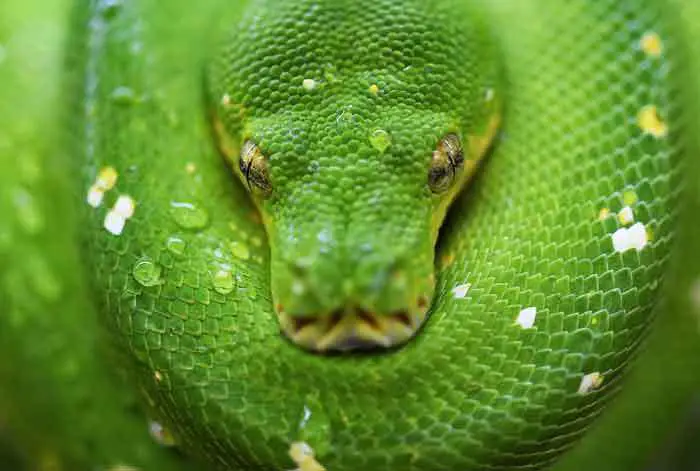
Ball pythons are naturally shy, preferring to hide and skulk about when nobody’s looking at them.
They are comfortable the most with steadily high humidity, private hiding spots and a range of temperatures.
Maintaining sufficient humidity in a ball python tank can be tedious but that it benefits the snake’s health.
There are several different ways this can be achieved.
However, using a humidifier makes things a lot easier and it does the job well!
If in doubt, err on the side of too high humidity.
